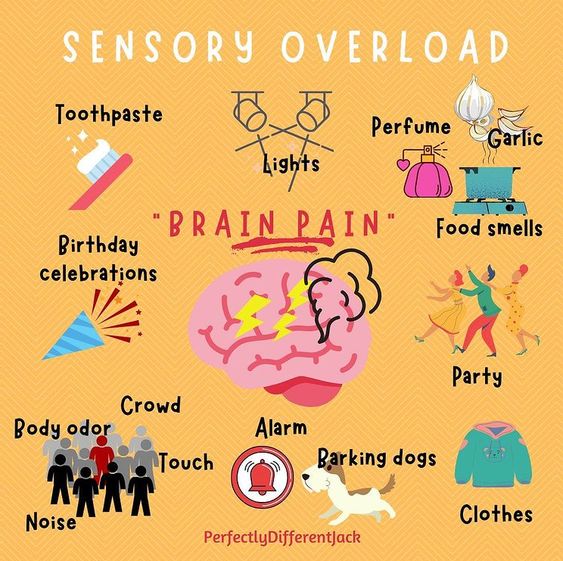Navigating the world of sensory stimuli can be a challenge for any parent, but it’s especially important when you’re raising a neurodivergent child. Sensory stimuli are the various sights, sounds, smells, tastes, and textures that our brains process daily. For kids with thinking and learning differences, these stimuli can sometimes be overwhelming or difficult to manage. In this blog post, we’ll delve into five examples of sensory stimuli and how they can impact your child’s life. By understanding these examples, you’ll be better equipped to create a supportive environment for your child and help them thrive.
Table of Contents
1. Visual Stimuli: Colors and Patterns
Visual stimuli surround us, from the bright colors of a toy to the intricate patterns on a rug. For some neurodivergent kids, these stimuli can be captivating, while for others, they may be overstimulating. To help your child, it’s essential to be mindful of the visual stimuli in their environment.
- Choose calming colors for their bedroom or play area
- Avoid overly busy patterns on clothing or bedding
- Use visual schedules or social stories to help them understand routines
Goally’s learning tablet can also be a valuable tool in managing visual stimuli, as it offers customizable settings to suit your child’s needs and preferences.
2. Auditory Stimuli: Sounds and Noises
Sounds are a constant part of our environment, but for kids with unique needs, certain noises can be distressing. To support your child, it’s crucial to pay attention to the auditory stimuli they encounter daily.
- Monitor the volume of music, TV shows, or video games
- Be aware of background noises, such as traffic or appliances
- Provide noise-canceling headphones or earplugs for overwhelming situations
Moreover, Goally’s apps can help your child develop coping strategies for dealing with challenging auditory stimuli, fostering a sense of independence and confidence.
3. Tactile Stimuli: Textures and Touch
Textures and touch are essential sensory stimuli that can either comfort or irritate a child. To create a soothing environment, it’s important to consider the tactile stimuli your child encounters and how they may affect them.
- Offer a variety of textures in clothing, blankets, and toys
- Encourage sensory play with materials like sand, water, or playdough
- Respect your child’s preferences for hugs, high-fives, or personal space
By being mindful of tactile stimuli, you can help your child feel more comfortable and secure in their surroundings.

Read more: Sensory Processing Disorder Is More Than Just One Thing
4. Olfactory Stimuli: Smells and Scents
Scents can evoke strong reactions in neurodivergent kids, both positive and negative. To accommodate your child’s needs, it’s essential to be mindful of the olfactory stimuli in their environment.
- Avoid strong-smelling foods, cleaning products, or perfumes
- Use calming scents like lavender or chamomile in their environment
- Encourage your child to explore and identify different smells
In doing so, you can help your child develop a better understanding of their sensory preferences and learn how to cope with challenging scents.
5. Gustatory Stimuli: Tastes and Flavors
Taste preferences can vary greatly among kids with thinking and learning differences. To support your child’s dietary needs, it’s important to consider the gustatory stimuli they experience and how they may impact their well-being.
- Offer a variety of flavors and textures in meals
- Respect their preferences and aversions to certain foods
- Encourage them to try new foods at their own pace
By being attentive to your child’s taste preferences, you can help them develop a healthy relationship with food and enjoy mealtimes more.
Goally | Apps To Support Child Development
Looking for fun ways to help your child learn life skills? Try Goally! The Goally tablet comes with award-winning learning apps and video classes to help kids develop the skills they need to become independent with FUN & evidence-based practices.

Our apps teach executive function, language, emotional regulation, finger dexterity skills, and more.
As your child develops new skills, you can increase the difficulty level of the tasks in the app to challenge and motivate them even further. This helps your child grow and progress at their own pace, while also keeping them engaged and excited about their development.

Final Thoughts
Understanding sensory stimuli and their impact on your neurodivergent child is essential for creating a supportive environment. By considering these five examples and making adjustments to your child’s surroundings, you can help them feel more comfortable and confident in their daily life. Remember, every kid is unique, so it’s crucial to observe and adapt to their specific needs and preferences. With the help of tools like Goally’s learning tablet and apps, you can further support your child’s sensory needs and help them thrive. Be sure to take the auditory processing disorder test for kids.
FAQ’s About Sensory Stimuli
What are sensory stimuli?
Sensory stimuli are the various sights, sounds, smells, tastes, and physical sensations that we experience through our five senses.
How do sensory stimuli affect children's learning and development?
Sensory stimuli play a crucial role in a child's learning, development, and ability to regulate their emotions and behavior.
What are examples of sensory processing issues in children?
Examples include over-sensitivity to certain sounds, textures, or lights, or under-responsiveness to pain, temperature, or other sensations.
How can parents help children with sensory processing difficulties?
Parents can help by creating a calming sensory environment, using visual schedules, and incorporating sensory tools like weighted blankets or fidget toys.
What are the benefits of sensory-based activities for children?
Sensory activities can improve focus, reduce anxiety, build self-regulation skills, and make learning more engaging and accessible.
This post was originally published on 05/17/2023. It was updated on 04/17/2024.

Goally
We help parents teach their kids life skills, like doing bedtime and morning independently. Backed by science, we incorporate evidence-based practices and expert-informed designs in all of our apps and content.






